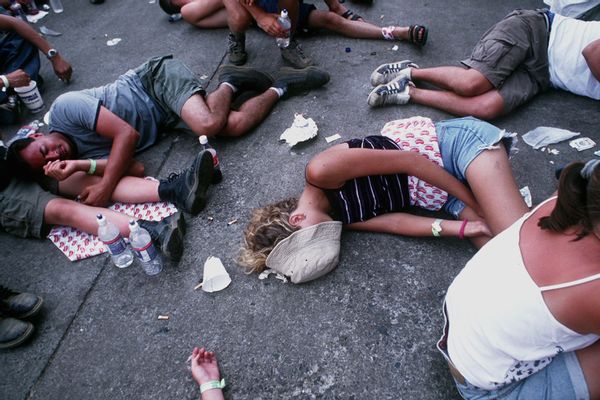The 7 most heinous “Trainwreck: Woodstock ’99” revelations from Netflix’s docuseries
 Trainwreck: Woodstock ’99 (Netflix)
Trainwreck: Woodstock ’99 (Netflix)Woodstock’s security protocols prohibited festivalgoers from bringing their own food and water bottles into the venue. Instead, they had to purchase food from onsite vendors, even though most of the available snacks, meals and refreshments were incredibly expensive.
“It was so hot that you literally needed to drink a gallon of water an hour yourself to stay hydrated,” said Sara, who attended Woodstock ’99 as a teenager. “There were definitely fountains there. But there was at least a 25-minute wait . . . So, we went to get just a simple bottle of water. Nobody could afford that water.”
The average price for a bottle of water in the late ’90s was around 65 cents. At Woodstock ’99, however, a single bottle cost an astounding $4.00, which then went up to $12.00 when vendors ran low on stock. Per old footage featured in the documentary, one concertgoer complained that a small drink and a measly side salad cost $9.00 in total.
Several members of the festival’s production team, including Colin Speir, Lee Rosenblatt and Pilar Law, noted that the price hikes were prompted by the Woodstock founders and organizers. The higher-ups were hellbent on making a considerable profit, especially after their previous revival, Woodstock ’94, tanked financially due to overcrowding and security issues.
It became clear that Woodstock ’99 was no longer emulating the “peace, love and flower power” vibes established by the original Woodstock; it was purely “a money-making venture.”
“That was the moment for me where it stopped becoming about the concert-goer or the festival-goer experience,” Rosenblatt said. “It was just cutting budgets, cutting budgets. We need to make changes. We’re not making profits. Their goal was to make money.”
Rosenblatt continued, saying those in charge of organizing Woodstock ’99 decided to sell all the food rights to an affiliate corporate group, who had complete control over vendor pricing. Once the deal was sealed, the prices were set and none of the staffers could do anything to challenge them.
“All hopes and dreams of ‘Peace, Love and Understanding 1969’ went out the window.”

